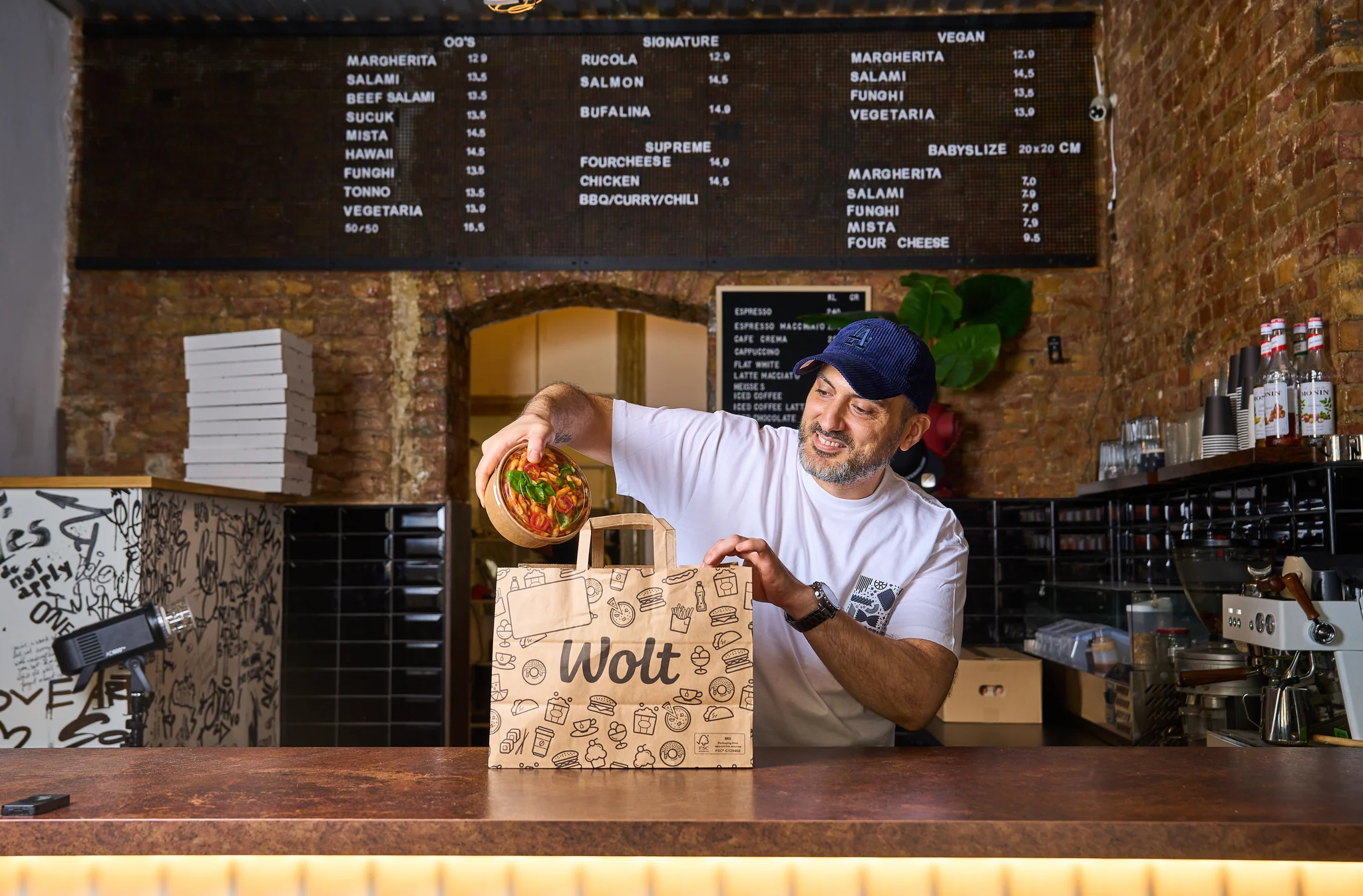Restaurant menu example: Creating menus that drive sales
⏰ 4 min read 🖊️ Andrea Hesler, B2B Content Marketing Manager

A restaurant menu is more than just a list of dishes; it’s a tool to get customers excited about what’s coming next. While many factors draw diners in, your menu seals the deal—especially online, where food photos do the talking. Without the in-person vibe, ambiance, or friendly faces, those images need to create that connection.
Whether you run a restaurant, bakery, or café, how you present your offerings can make all the difference. In this guide, we’ll explore restaurant menu examples that not only attract customers but keep them coming back for more.
Capturing attention with menu photography
Ever see a dish and instantly feel hungry, even if you just ate? That’s the magic of great menu photography. It’s about making your food look so good that customers can’t resist ordering.
💡Did you know? High-quality photos of your top dishes can boost your restaurant’s conversion rate on Wolt by up to 9%, making your images a powerful tool for driving sales. Read more about menu design in our Menu Design Essentials.
Lighting is everything: Natural light is your best friend. It brings out the colors and textures that make your dishes pop. If that’s not an option, softbox or LED lights can help you get that clean, crisp look.
Angles make the difference: The right angle can change everything. Top-down shots work well for flat dishes like pizzas, but a 45-degree angle might be just right for those juicy, stacked burgers.
Consistency counts: Keep your photo style consistent across the menu. It gives your offerings a professional, cohesive look.
❓Already a Wolt merchant? Learn the best practices to add, edit, and update your menu photos on Wolt for optimal sales impact in this article.
Using descriptive language to enhance your menu
Words matter, especially when it comes to food. The best restaurant menu examples use enticing descriptions can take a dish from “maybe” to a “must-try” in seconds.
Be detailed, be evocative: Go beyond the basics. Instead of “Spaghetti with Tomato Sauce,” try something like “Homemade Spaghetti with Sun-Ripened Tomato Basil Sauce.” It paints a picture and makes the dish irresistible.
Engage the senses: Use words that make customers taste, smell, and feel the dish before it even hits the table. Think “crispy,” “succulent,” “velvety,” or “zesty.”
Highlight the good stuff: If your dish features fresh, local, or premium ingredients, shout it out. This not only justifies the price but also adds a layer of trust.
Include serving sizes: For appetizers, sides, shared plates, or family-style entrees, mention the number of items or how many people the dish serves. It helps customers know what they’re ordering and might even encourage them to add more to their cart.
Structuring your menu for maximum impact
The layout of your menu influences what customer order. The most effective restaurant menu examples are strategically set up so that customers are naturally drawn to the dishes that bring in the most profit.
Prioritize high-profit items: Customers’ eyes naturally gravitate to certain spots on the menu. Place your high-profit items in these “hot spots” to give them a little nudge.
Feature a signature dish: A standout dish that’s unique to your restaurant can drive orders and reinforce your brand identity. Make it the star of your menu.
Optimize menu length and coverage: Customers should have full access to your offerings, whether they’re dining in or ordering online.
💡 Did you know? Desserts and drinks are often last-minute additions but our data shows that these high-margin items can boost the final bill by up to 15%. Wolt’s Merchant Portal can help you track which dishes are pulling in the profits.
Designing an online menu for your website
Your website menu is your digital storefront, and it needs to be as sharp as the in-house version. A user-friendly online menu can drive sales. Make it easy for customers to browse and order with an online menu that’s intuitive and visually appealing.
Keep it organized: Clear categories make it easy for customers to find what they’re looking for, whether it’s appetizers, mains, or desserts.
Make it searchable: Adding a search function helps customers zero in on exactly what they want, fast.
Mobile-ready: Your menu needs to look great on all devices, especially phones, since more and more people are ordering on the go.
Incorporate SEO best practices: When designing your website menu, make sure to include keywords in page titles and descriptions. This simple strategy can improve your rankings and help more customers find your restaurant.
💡Quick stat: 61% of consumers say they are more likely to purchase from mobile-friendly sites. That’s why having a user-friendly, mobile-optimized online menu is key to capturing those sales. With Wolt Storefront, you can create a seamless, branded ordering experience that not only looks great on any device but also drives more conversions.
Conclusion
Your menu is more than just a list of dishes; it’s a powerful tool that can drive sales and build your brand. By applying these restaurant menu examples, using stunning photography, compelling descriptions, strategic pricing, and a strong online presence, you can create a menu that attracts customers and keeps them coming back.
With Wolt’s Merchant Portal, you can easily track sales, identify your menu’s top performers, and respond to customer feedback, giving you a clear understanding of what your customers want. Once your menu is designed, you can use Wolt Storefront to offer online ordering directly from your website. Ready to get started?
Sākt ir viegli – reģistrējies šodien
Reģistrējies un izmanto visas Wolt priekšrocības. Vienkārši ievadi dažus datus par savu uzņēmumu, un viss tiks sagatavots pavisam īsā laikā.